The Western Europeans have been experiencing a labor shortage for the past few years. It has been difficult to find people who are willing to learn the art of hand buffing.
The problem is that manual buffing, as we know it in the United States, requires a long training period, six months to a year before the average trainee is able to master the art of hand buffing. After making this investment in training, the employer has a high risk of losing these people after a few months.
Manual buffing is a dirty, injury-prone, fatiguing job. There is an increased risk to the employer of costly compensation cases because of the repetitive motion resulting in disabling carpal tunnel problems.
The normal method of buffing employs a relatively small buffing wheel, from10 inches in diameter to a maximum of 16 inches in diameter. The hand buffing lathe is normally running at fairly high speeds for cut buffing, anywhere from 1600 Rpms to 2300 RPMs. At these speeds, the operator has to be extremely careful how he presents the part to the wheel.
If the part is presented below the center of the buffing wheel, the part can be easily ripped from the operator’s hand often resulting in injury. It is not easy to master the art of hand buffing with a buffing wheel traveling at these speeds. It is time-consuming and tedious to buff all areas of the part. The contact area of the buffing wheel on the part is relatively small.
Out of need, the Europeans developed a totally revolutionary concept for manual buffing. They have developed a hand buffing lathe that is capable of using wheels up to a maximum of 40 inches in diameter. The theory is that at low RPMs 250 to 400 RPMs, the arc of contact is large, completely engulfing the part. Since the speed is low, the operator can completely immerse the part in the buff without having it pulled from his hands.
The time required to cut and color buffs parts are dramatically reduced. Much less effort is required by the operator as compared to conventional small wheel buffing. The part remains much cooler.
An unskilled operator can be trained in a day to produce good parts. The large buff is capable of finishing small as well as large parts. The "mush" buffing allows the buff to reach areas that are normally difficult to buff. The finish is much more uniform than conventionally buffed parts.
Normally color buffing requires a higher skill level than cut buffing. The presentation of the part to the wheel is more critical in order to obtain a scratch-free, grease-free, and non-directional finish.
With the large buff, low-speed technology color buffing becomes a simple process. The operator can completely immerse the part in the wheel producing a bright scratch-free surface. The only problem with this large-diameter low-speed buffing is that the wheel runs so cool that the conventional buffing compound is not well suited to this technology.
The binders and greases in the conventional compound have a relatively high melting point since they have to withstand higher temperatures generated when using high speed and pressure associated with conventional buffing. Consequently, if one uses a conventional bar compound the binder and greases in the compound tend to deposit on the part as black streaks.
New buffing compounds have been developed that melt at lower temperatures. These new compounds eliminate the deposits caused by conventional bar compounds. The new compounds have the added benefit of much easier removal in subsequent cleaning operations. The residual compound film on the part melts at a much lower temperature facilitating removal in aqueous cleaning baths.
Another benefit is the extremely long buff life, 4 to 5 months, depending on the job. Longer life translates into a much cleaner buffing operation.
For more information on Large Buffing Wheels and custom formulated buffing compounds for your specific application, contact us and we will be glad to help and answer any of your questions.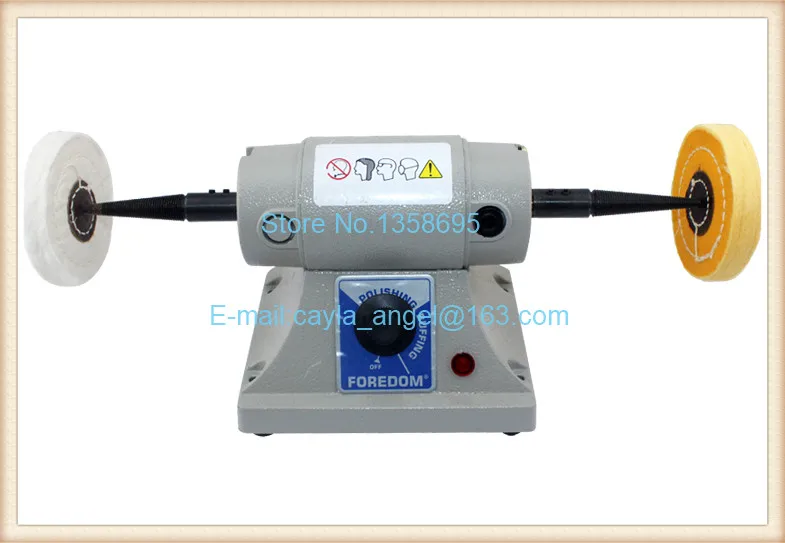
High-Speed
Buffing
by Prentice St.
Clair and Brad Burford
Perhaps the most common
detailer's nemesis is high-speed buffing. Fears of swirl
marks and "burns" keep some detailers away
from the most effective tool available for exterior
detailing. The results attainable from high-speed buffing
are far superior to the results you get from other buffing
tools. The failure to offer high-speed buffing can limit
your potential as a detailer on several levels, including
improved customer satisfaction as a result of a greatly
improved paint surface appearance and the ability to
charge a premium for this premium service.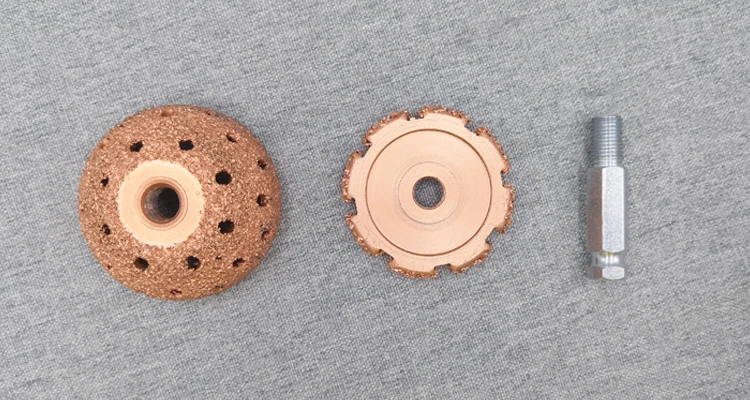
In this two-part article, we aim to provide some information about high-speed buffing that will ease the fears of the high-speed novice as well as provide some tips and tricks for even the experienced high-speeder. It is important to remember, however, that although reading this article will greatly help you in your high-speed endeavors, "there is no substitution for hands-on training or some kind of complete video training example to follow," indicates Stephen Powers of Rightlook.com.
Detailing can be described as an activity that combines
equipment, chemicals, and knowledge of vehicle surfaces
to produce procedures that yield a quality result. Using
this model will help us break down the act of high-speed
buffing into its elements. The equipment involved is,
of course, the buffer itself, as well as the various
pads that can be attached to the machine, and paint
evaluation tools. The chemicals are the myriad of available
waxes, polishes, and compounds. Knowledge of vehicle
surfaces, in this case, refers to understanding paint
systems and how to identify problems in them. The procedure
is the act of combining these elements to correct a
specific paint problem.
The equipment involved is,
of course, the buffer itself, as well as the various
pads that can be attached to the machine, and paint
evaluation tools. The chemicals are the myriad of available
waxes, polishes, and compounds. Knowledge of vehicle
surfaces, in this case, refers to understanding paint
systems and how to identify problems in them. The procedure
is the act of combining these elements to correct a
specific paint problem.
In this first of a two-part series, we will talk about the equipment aspect. In the second part of the series, we will talk about chemicals, vehicle surfaces, and procedures.
The High-Speed Rotary Buffer
The first order of business in a discussion of equipment
is to explain the difference between high-speed rotary
buffing and dual-action or random orbital buffing.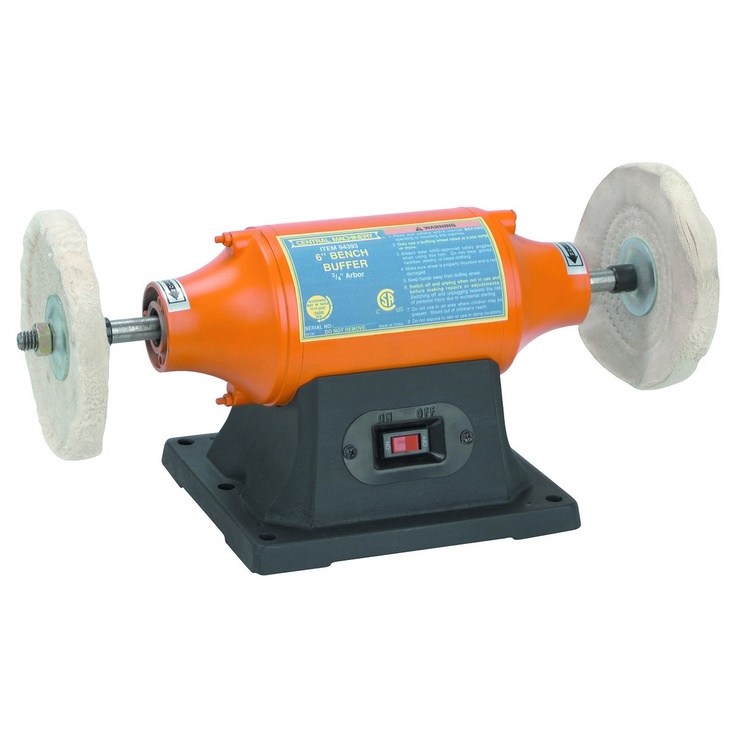 The
wheel of a random orbital buffer operates with two separate
motions: a slow circular motion combined with an orbital
motion. That is, as the wheel spins, it also orbits
slightly off-center around a central point. This action
essentially imitates hand motion, but at a much faster
rate. There is virtually no build-up of heat and it
is difficult to cause damage to the paint surface,
even with the most aggressive compounds.
The
wheel of a random orbital buffer operates with two separate
motions: a slow circular motion combined with an orbital
motion. That is, as the wheel spins, it also orbits
slightly off-center around a central point. This action
essentially imitates hand motion, but at a much faster
rate. There is virtually no build-up of heat and it
is difficult to cause damage to the paint surface,
even with the most aggressive compounds.
The rotary buffer, on the other hand, because of its
high speed and continuous motion over a single point,
causes much more concentrated friction and heat. It
is the heat and friction that gives this machine its
advantage over the DA machine. The heat softens the
paint so that the friction can work quickly and effectively
to remove defects. It is also the reason why the rotary
can cause much more damage in the paint in a very short
period of time. In the final finishing step, the heat
allows a burnishing effect--kind of a "melting"
of the paint--that allows correction of minor paint
damage left over from the major cutting steps, yielding
a high and deep gloss finish.
The heat softens the
paint so that the friction can work quickly and effectively
to remove defects. It is also the reason why the rotary
can cause much more damage in the paint in a very short
period of time. In the final finishing step, the heat
allows a burnishing effect--kind of a "melting"
of the paint--that allows correction of minor paint
damage left over from the major cutting steps, yielding
a high and deep gloss finish.
The high-speed buffer is available in several configurations.
First, you will have to choose between a pneumatically
(i.e., driven by compressed air) and electrically powered
device. Pneumatically powered buffers are lighter and
require much less maintenance but can require a large
compressed air source, especially if multiple units
or other devices are being used off the same compressor. Inadequate compressor strength will not only slow down
the buffer but also reduce its torque. Electrically
powered machines, on the other hand, simply plug into
a standard wall socket, but they do need regular light
maintenance and are a bit heavier.
Inadequate compressor strength will not only slow down
the buffer but also reduce its torque. Electrically
powered machines, on the other hand, simply plug into
a standard wall socket, but they do need regular light
maintenance and are a bit heavier.
The recommended unit will have two important features:
(1) trigger-controlled variable speed--the farther you
push in the trigger, the faster the machine goes, and
(2) a speed limiter, which allows the operator to set
the maximum speed at which the machine will rotate,
regardless of a hook-and-loop style backing plate in
lieu of the standard rubber backing plate that comes
with the machine.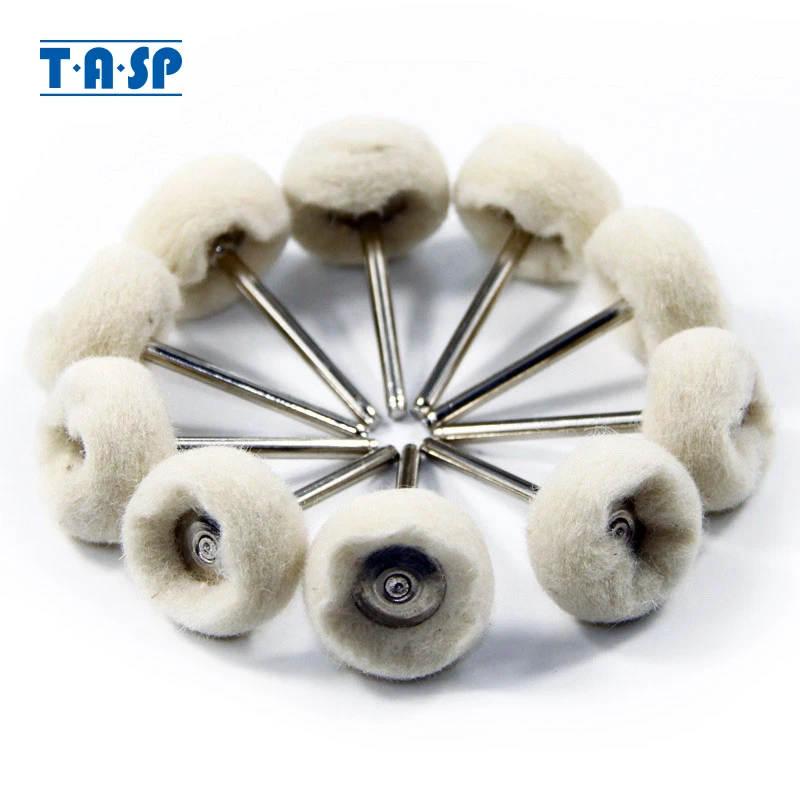 The backing plate has the "hook"
part of the hook-and-loop fastening system that allows
easy switching of pads; instead of having to undo and
re-do a nut each time you want to change pads, you simply
pull off the pad from the backing plate and slap on
another one. Make sure to get the backing plate recommended
by the manufacturer of the pads that you will use. Mixing
backing plate and pad manufacturers can lead to difficulties
in removing pads.
The backing plate has the "hook"
part of the hook-and-loop fastening system that allows
easy switching of pads; instead of having to undo and
re-do a nut each time you want to change pads, you simply
pull off the pad from the backing plate and slap on
another one. Make sure to get the backing plate recommended
by the manufacturer of the pads that you will use. Mixing
backing plate and pad manufacturers can lead to difficulties
in removing pads.
The bottom line about buffers is that swirl marks placed
into the paint by a high-speed buffer can only be removed
by a high-speed buffer. Despite great polishing products
and great random-orbit units that are available (not
to mention fantastic manufacturers claims), these can
never completely remove swirl marks caused by high-speed
buffing.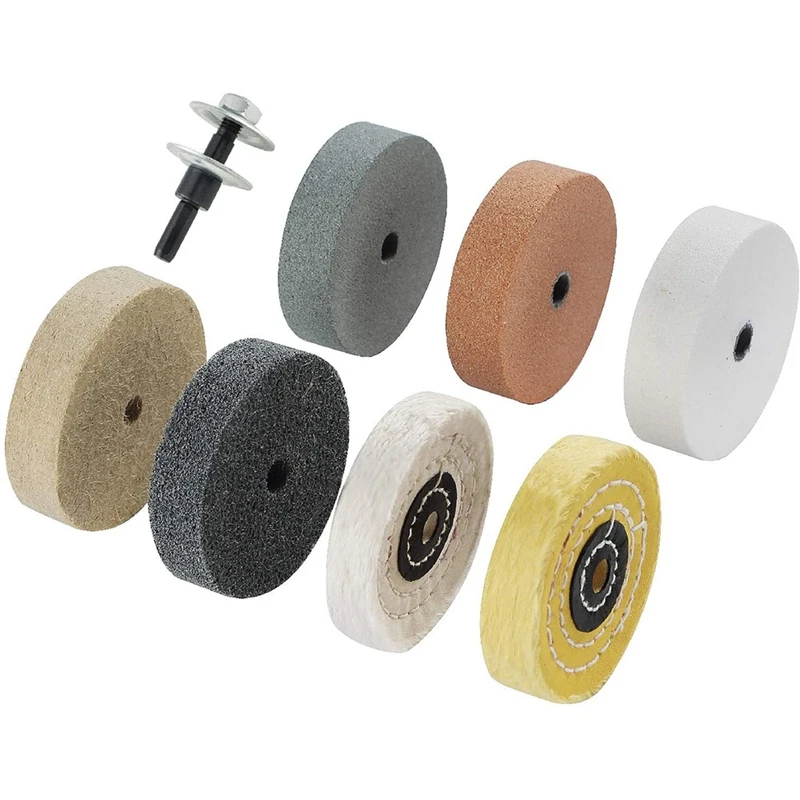 At best, random-orbit machines in combination
with swirl removing chemicals can reduce and hide swirl
marks, but it is difficult to completely remove them.
At best, random-orbit machines in combination
with swirl removing chemicals can reduce and hide swirl
marks, but it is difficult to completely remove them.
The Buffing Pad
The second order of business in a discussion of
equipment is to understand rotary buffing pads, which
come in several sizes, are round in shape, and come
in a variety surface configurations and compositions.
If you have chosen a hook-and-loop backing plate for
your buffer (which most detailers do), you will need
to chose pads that have the "loop" style backing.
Pads range in size from six to ten inches in diameter.
Probably the most common size pad used has a diameter
of 7 1/2 inches.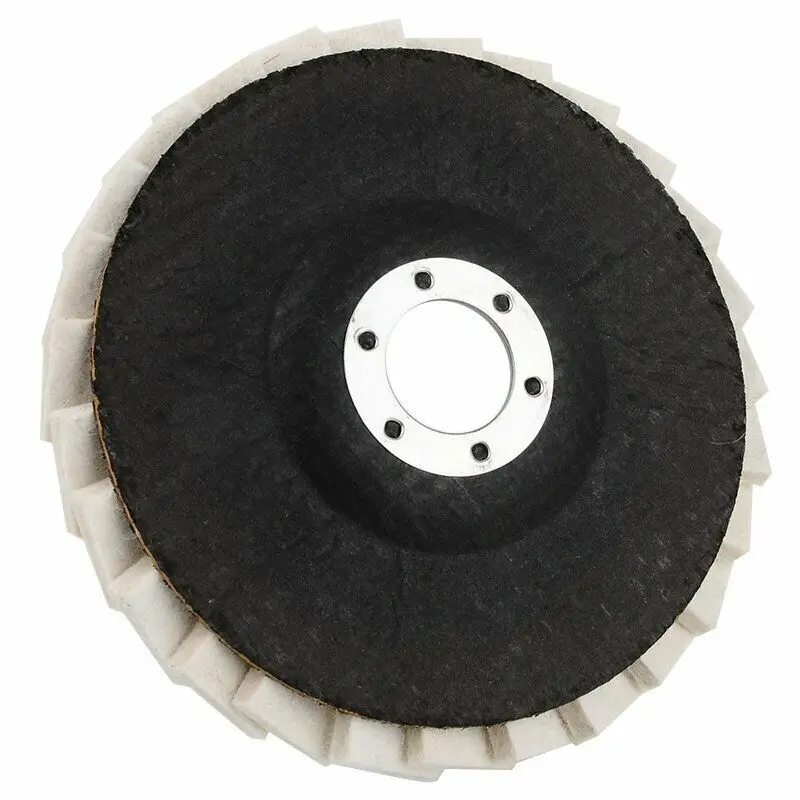 The larger sizes are more likely to
cause swirl marks and heat damage because the outer
edge of the pad is spinning so fast. On the other hand,
the smallest pads lack some cutting ability because
they cannot generate as much heat as the larger pads.
Your best bet is to experiment with several types of
pads and also have several types on hand so that you
can interchange them as the need arises.
The larger sizes are more likely to
cause swirl marks and heat damage because the outer
edge of the pad is spinning so fast. On the other hand,
the smallest pads lack some cutting ability because
they cannot generate as much heat as the larger pads.
Your best bet is to experiment with several types of
pads and also have several types on hand so that you
can interchange them as the need arises.
The first breakdown is between wool and foam pads. In
general, wool pads are considered "cutting"
in nature. That is, the fibers of the wool pad "cut"
into the paint, removing top layers of paint much more
rapidly than foam pads, which do a relatively small
amount of cutting but instead rely on greater heat build-up
to do their work.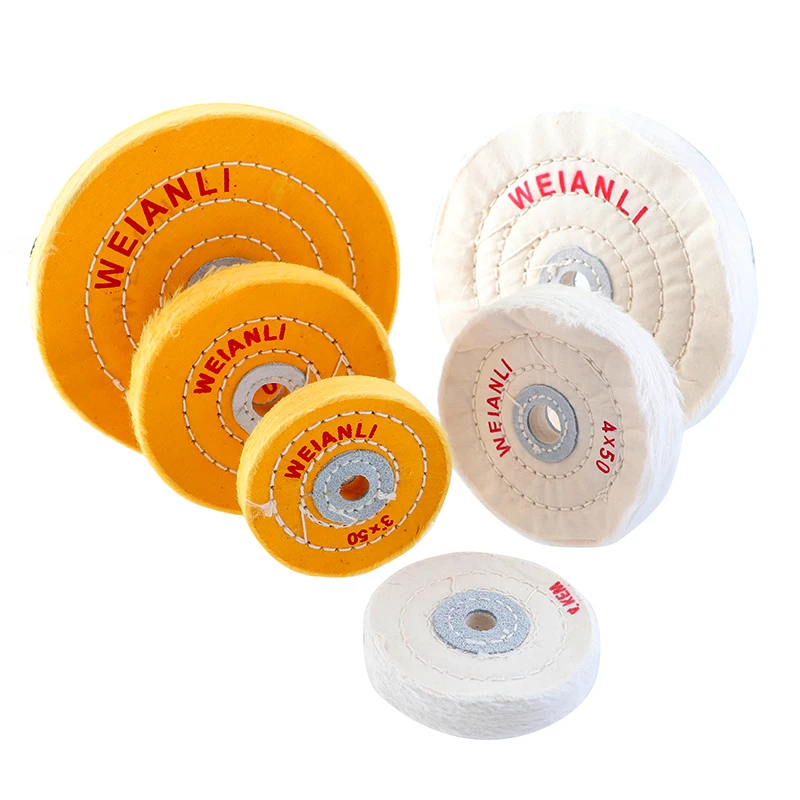
There are several types of wool pads. The four-ply yarn
cutting pad (white wool) is perhaps the most aggressive
of the lot. It is not recommended on newer clear coat
finishes. The blended pad, which combines both natural
and synthetic fibers, is best for cutting newer clear
coats. Then there is the "finishing" wool
pad, which can be composed of genuine lambs wool or
a combination of lambs wool and polyester (synthetic)
fiber. The genuine lambs wool, although more expensive,
is recommended over synthetic because it contains lanolin,
which is a natural oil that helps to lubricate the buffing
process and keep the pad soft. This reduces the amount
of micro-scratching left behind by the pad, especially
on darker paints.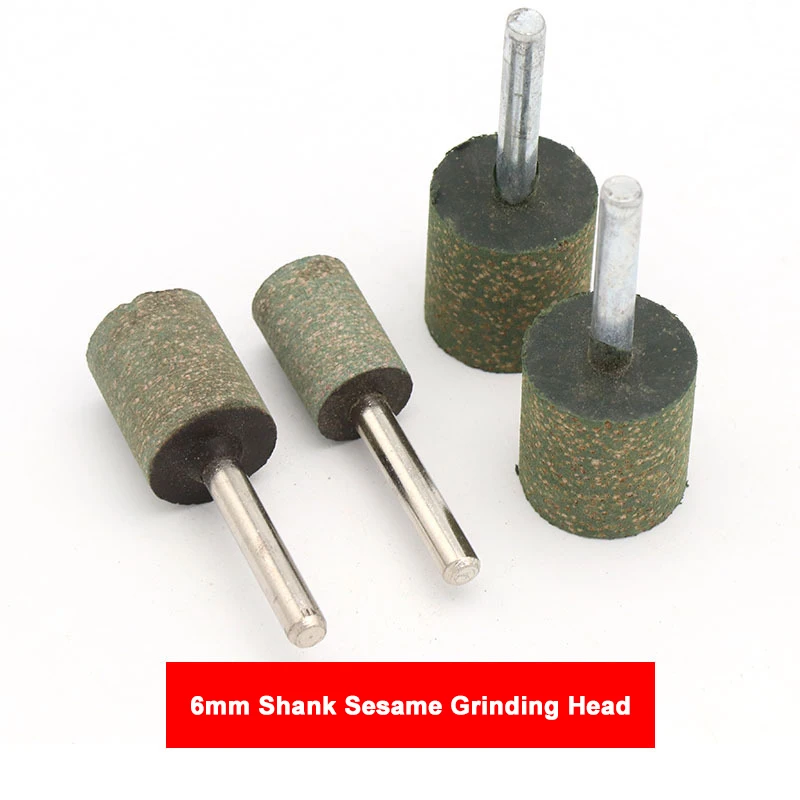
To clean wool pads, use a device known as a spur, available
from your favorite detail supplier. To remove chemical
build-up as well as the contaminants that are being
picked up by the pad while it works over the paint surface,
spur the pad often during use. When you are finished
with the pad, remove it, set it down, face up, and allow
it to dry over night. Never apply any kind of heat to
dry a wool pad. The next day, virtually all of the dried
chemical residue will come off with by using the spur.
To use the spur, lay the back of the buffer on
one knee, turn it on, and run the spur back-and-forth
along a horizontal line on the side of the pad that
is spinning toward the ground. Make sure the cord is
out of the way of the pad so that it does not catch
in the spinning wheel. Wool pads should never be washed
or force-dried. This will break down the pad and remove
natural oils, which can cause swirl problems down the
line. It will also shrink the pad. If the paint damage
is severe, a wool pad may be good for only that
one job. But most will last for several jobs. Don't
make the mistake of trying to save money by stretching
the life of a pad--if an over-worked pad causes damage
that you have to repair, you have just lost all the
money you tried to save by trying to extend the life
of the pad.
Make sure the cord is
out of the way of the pad so that it does not catch
in the spinning wheel. Wool pads should never be washed
or force-dried. This will break down the pad and remove
natural oils, which can cause swirl problems down the
line. It will also shrink the pad. If the paint damage
is severe, a wool pad may be good for only that
one job. But most will last for several jobs. Don't
make the mistake of trying to save money by stretching
the life of a pad--if an over-worked pad causes damage
that you have to repair, you have just lost all the
money you tried to save by trying to extend the life
of the pad.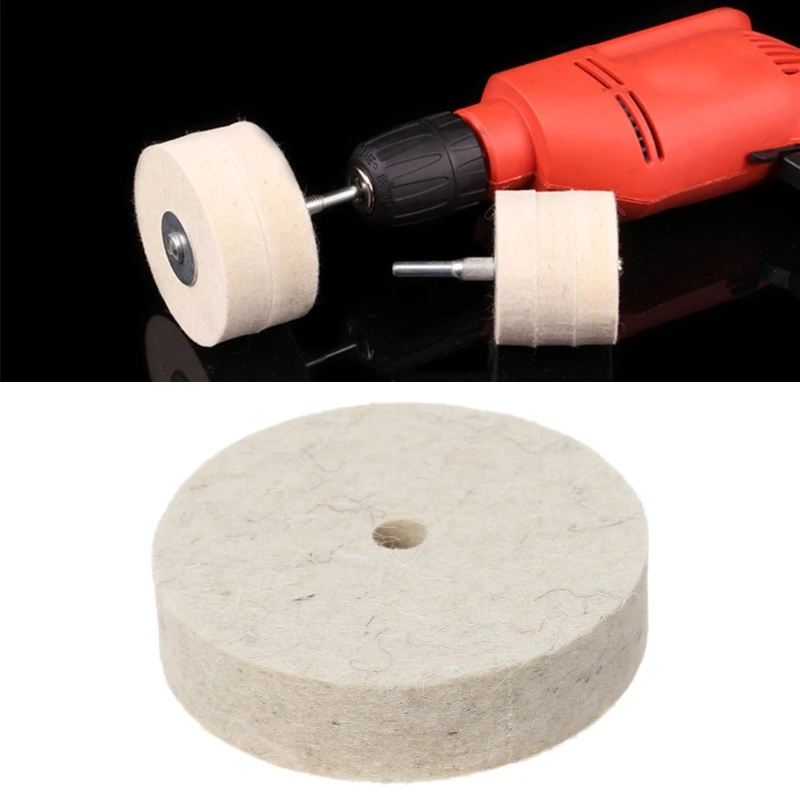
Foam pads are generally for light compounding as well as final finishing (or polishing). In general, foam pads do not cut nearly as much as wool pads, but they do produce much more heat than the wool pad. Therefore, foam pads are usually reserved for final finishing and finessing of the paint finish to remove minor damage and any scratches leftover. Also because of the heat factor associated with foam pads, using compounds or aggressive polishes is not recommended.
There are several types of foam pads available, but
the main categories involve the size of the foam cells
and the surface configuration. Cell "openness"
refers to the size of the holes in the foam.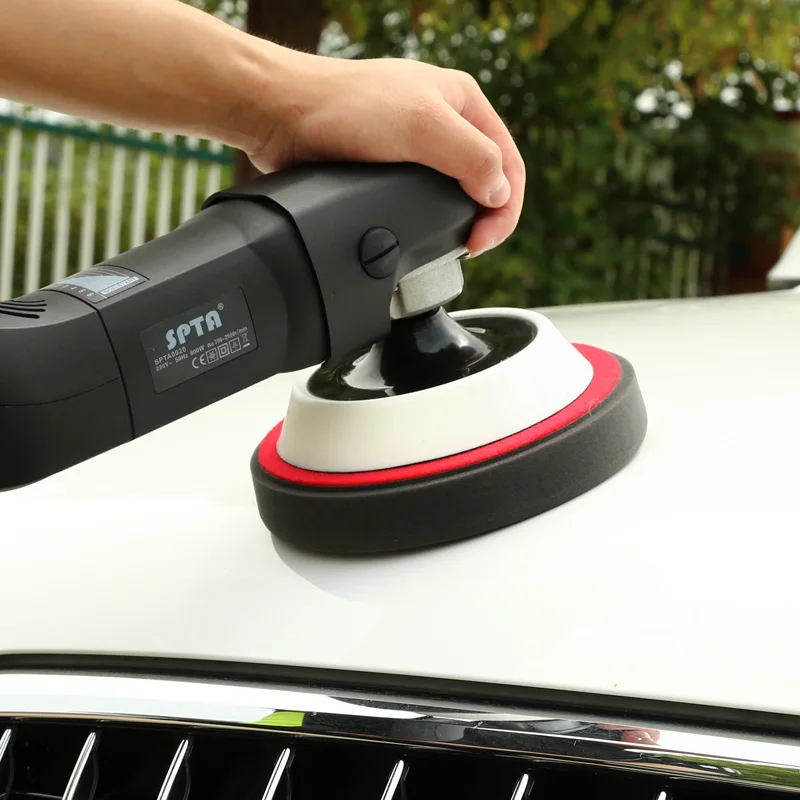 A closed-cell
pad has small holes and an open-cell pad has larger
holes. The latter is more aggressive than the former
and is sometimes even called a foam cutting pad; whereas
closed-cell pads have much smaller holes in the foam,
making them perfect for final finishing.
A closed-cell
pad has small holes and an open-cell pad has larger
holes. The latter is more aggressive than the former
and is sometimes even called a foam cutting pad; whereas
closed-cell pads have much smaller holes in the foam,
making them perfect for final finishing.
A standard foam pad has what is known as a "flat" surface configuration, even though the face of the pad is actually convex. Other pads have a "waffle-" like surface that resembles an egg crate. These, and other specialty pads are designed to reduce the amount of surface heat generated by the pad.
When shopping for pads, do not be fooled by the color
of the foam pad.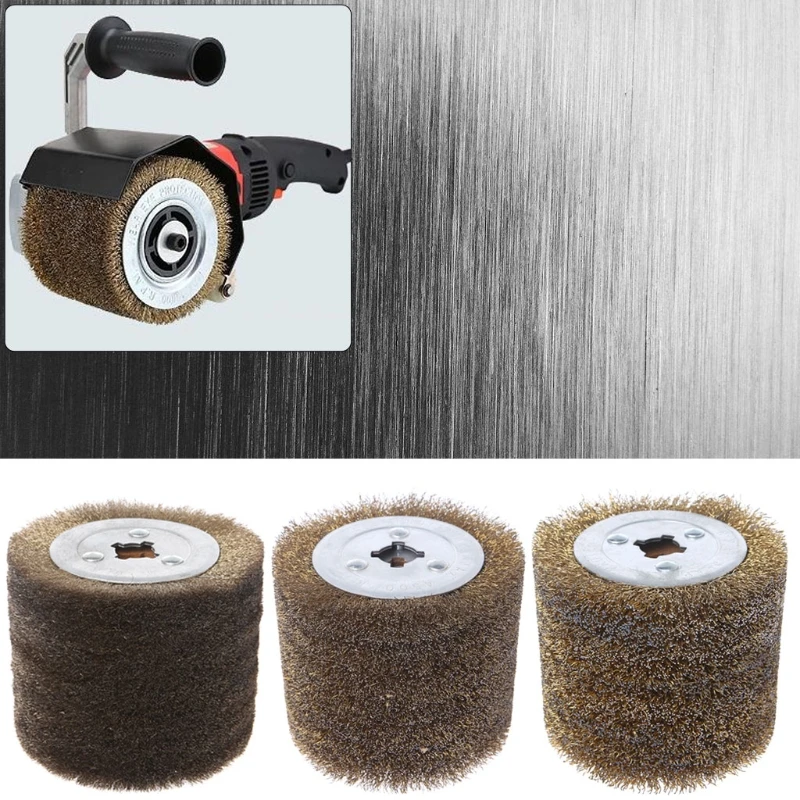 Since there is no standardization among
manufacturers, the color of the pad really should not
be used as an indication of the type of pad. Make sure
you read the label and speak with your distributor about
the properties and recommended uses of the pads you
are considering.
Since there is no standardization among
manufacturers, the color of the pad really should not
be used as an indication of the type of pad. Make sure
you read the label and speak with your distributor about
the properties and recommended uses of the pads you
are considering.
Foam pads can be cleaned with a toothbrush-sized, soft-bristled
detail brush. Some detailers use a wire brush, however,
this is not recommended because of the possibility that
one of the wires could break loose and lodge itself
into the foam, causing a disaster the next time the
pad is used. Use the brush to clean the foam pad in
similar fashion as using the spur on wool--lay the back
of the buffer on one knee, turn it on, and run the brush
back-and-forth along a horizontal line on the side of
the pad that is spinning toward the ground.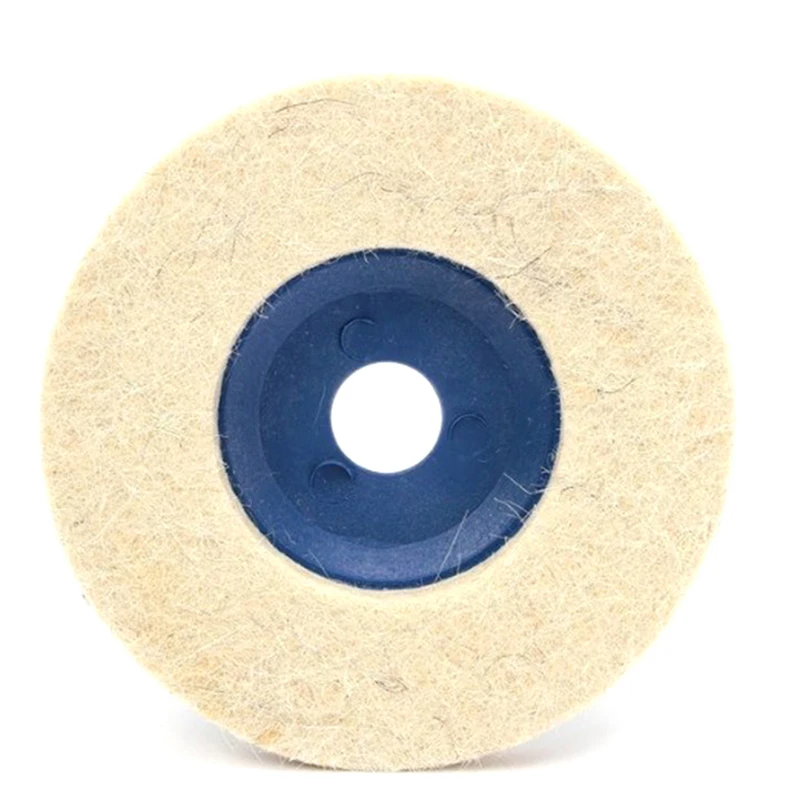
Clean the pad often during use. When you are finished with the pad, remove it, set it down, face up, and allow it to dry over night. Never apply any kind of heat to dry a foam pad. The next day, virtually all of the dried chemical residue will come off with by using the brush cleaning method described above. Finally, should a foam pad lose chunk or plug of foam, discard it immediately--the sharp edges from the missing area can cause scratching on the paint surface.
Paint Evaluation Tools
Standard in any detailer's tool kit should be at least
some of the following paint evaluation equipment, which
allows you to determine the condition of the paint far
and beyond what you can do by simply looking at the
surface.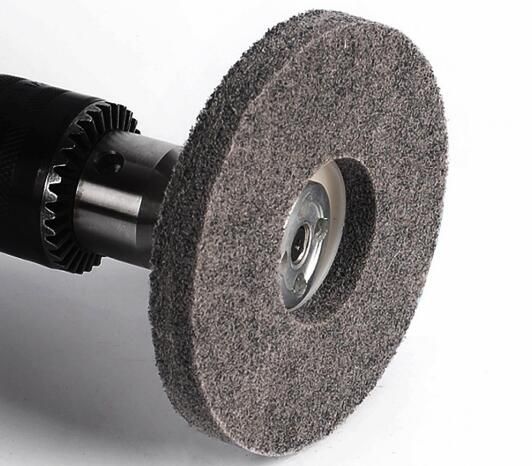 That is not to say that looking at the surface
is not important. In fact, just the contrary. Visual
inspection is a critical first step to understanding
what a particular paint job needs. If possible, visually
inspect the vehicle in both bright sunshine as well
as under fluorescent lighting. These two extremes will
reveal different types of damage. Also touch the cleaned
surface to check for roughness from fallout, over spray,
and other contaminants.
That is not to say that looking at the surface
is not important. In fact, just the contrary. Visual
inspection is a critical first step to understanding
what a particular paint job needs. If possible, visually
inspect the vehicle in both bright sunshine as well
as under fluorescent lighting. These two extremes will
reveal different types of damage. Also touch the cleaned
surface to check for roughness from fallout, over spray,
and other contaminants.
A photo loupe, used by photographers to examine negatives,
is a simple and inexpensive tool that will assist tremendously
in visual inspection. Another inexpensive visual tool
is the lighted magnifier, which allows you to look at
a lighted portion of the paint surface at about 30x. Paint thickness can be measured using one of several
devices designed to do so. Some of these devices are
simple non-powered paint thickness gauges whereas others
can be expensive electronic thickness meters. Gloss
meters, which measure the distinctness of image gloss,
can be as simple as a sheet of paper with a graduated
scale of thin black lines that you hold up to the paint
finish, or as complex as an expensive electronic viewing
box. Finally, a surface heat gauge is important to have
on hand while high-speed buffing to check the temperature
of the surface as you do the work. This device assists
you in the prevention of "burning" the paint.
Paint thickness can be measured using one of several
devices designed to do so. Some of these devices are
simple non-powered paint thickness gauges whereas others
can be expensive electronic thickness meters. Gloss
meters, which measure the distinctness of image gloss,
can be as simple as a sheet of paper with a graduated
scale of thin black lines that you hold up to the paint
finish, or as complex as an expensive electronic viewing
box. Finally, a surface heat gauge is important to have
on hand while high-speed buffing to check the temperature
of the surface as you do the work. This device assists
you in the prevention of "burning" the paint.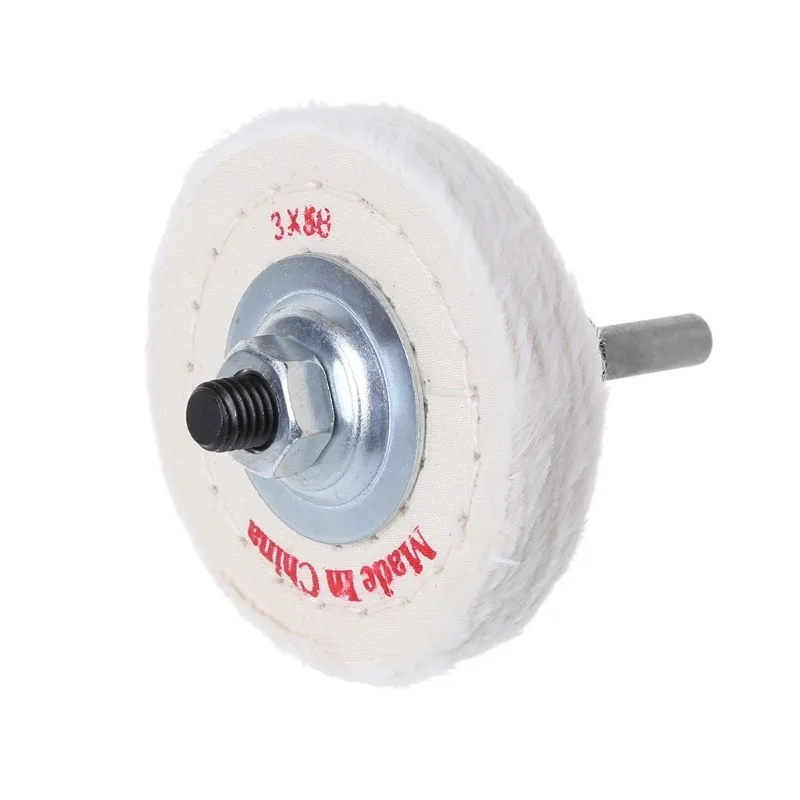
If you are planning on doing high volume of expensive high-speed buffing jobs, then it is worth the up front investment to obtain the higher end devices described above. However, if you are just starting out or are on a tight budget, then you should minimally have a lighted magnifier, inexpensive paint thickness gauge, and a surface heat gauge in your detailing "tool box."
Summary
In this part of the series on high-speed buffing, we
have discussed the equipment involved. Next time, we
will get into the chemicals, vehicles surfaces, and
procedures involved.
Copyright
2000, Prentice St. Clair and Brad Burford
Clair and Brad Burford
First published in the February, 2000 issue of American
Clean Car
(Volume 29, Number 2)
Home | Links | Site Map |Contact Us
Polishing pad ROXTOP 3Z 150mm with Velcro, without holes. P-3000 RoxelPro ROXTOP 3Z abrasive wheels are used to remove sanding marks and speed up the polishing process with RoxelPro polishing pastes.– Reduce sanding paper marks on the paintwork prior to polishing.– Follow up with suitable pastes from the RoxelPro range. polishing pads, reduce polishing time, increase productivity. – Use only when wet, with dust extraction switched off. ..
Hard foam pad for abrasive pastes, quickly and effectively removes marks and scratches. The hole in the center of the circle is designed for heat dissipation and less heat, which allows you to better control the polishing process. It also prevents the process of paste sintering in the center of the circle, which does not work during rotation - the angular velocity is zero. High quality foam ensures long lasting performance. Attaches to the polisher with Velcro...
High quality foam ensures long lasting performance. Attaches to the polisher with Velcro...
Medium-density foam pad for abrasive pastes quickly and effectively removes marks and scratches. The hole in the center of the circle is designed for heat dissipation and less heat, which allows you to better control the polishing process. It also prevents the process of paste sintering in the center of the circle, which does not work during rotation - the angular velocity is zero. High quality foam ensures long lasting performance. Attached to the polisher with Velcro...
High density foam pad for abrasive pastes quickly and effectively removes marks and scratches. The hole in the center of the circle is designed for heat dissipation and less heat, which allows you to better control the polishing process. It also prevents the process of paste sintering in the center of the circle, which does not work during rotation - the angular velocity is zero. High quality foam ensures long lasting performance. Attaches to the polishing machine with Velcro. It is recommended to use with ROXTOP FAST CUT abrasive polishing paste (green cap) to eliminate the marks that remain after processing with abrasive wheels...
Attaches to the polishing machine with Velcro. It is recommended to use with ROXTOP FAST CUT abrasive polishing paste (green cap) to eliminate the marks that remain after processing with abrasive wheels...
Velcro pad magenta 150 x 25mm. Purple foam pad for abrasive pastes. Hard foam pad for abrasive pastes, quickly and effectively removes marks and scratches. High quality foam ensures long lasting performance. Attaches to the polishing machine with Velcro...
Black foam pad for non-abrasive paste. Soft universal foam pad for non-abrasive pastes. It is applied to finishing polishing on all types of paint and varnish coverings. High quality foam ensures long lasting performance. Attached to the polisher with Velcro...
Velcro pad 150 x 30mm, thick, white. Hard foam pad for abrasive pastes, quickly and effectively removes marks and scratches. High quality foam ensures long lasting performance. Softer when cold than pad 221155. Attaches to the polisher with Velcro.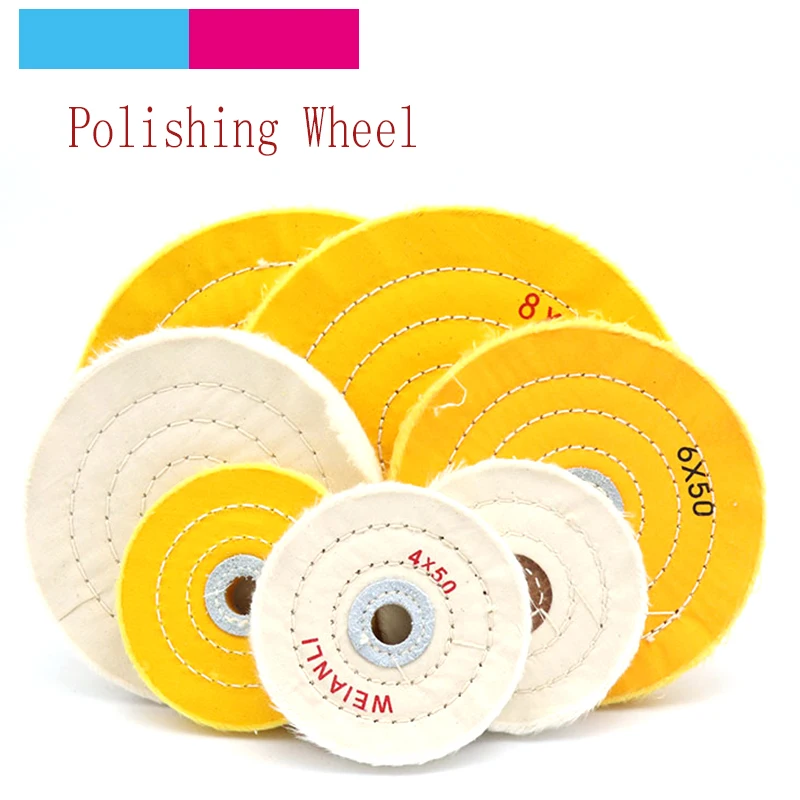 ..
..
Velcro pad 150 x 30mm, medium density, orange. Medium density foam pad for abrasive pastes quickly and effectively removes marks and scratches . High quality foam ensures long lasting performance. More rigid than pad 223055. Attaches to polisher with Velcro...
Velcro pad 150 x 30mm, soft, black, ribbed. Soft universal foam pad for non-abrasive pastes. It is applied to finishing polishing on all types of paint and varnish coverings. High quality foam ensures long lasting performance. The main advantage over polishing pad 225455 is a more efficient removal of holograms, which eliminates the recommendation to use 2 polishing pads with anti-hologram paste. Attached to the polisher with Velcro...
Velcro pad 75 mm. The polishing pad is made from high quality wool that delivers high performance for the most demanding applications. The pad is suitable for polishing all types of paintwork in bodywork and woodworking...
Velcro fur pad 133 mm. The polishing pad is made from high quality wool that delivers high performance for the most demanding applications. The disc is suitable for polishing all types of paintwork in body repair and woodworking...
The disc is suitable for polishing all types of paintwork in body repair and woodworking...
Velcro fur pad 150 mm. The polishing pad is made from high quality wool that delivers high performance for the most demanding applications. The pad is suitable for polishing all types of paintwork in bodywork and woodworking...
Velcro pad 150 mm fur. Fur pad with Velcro felt base, providing a highly effective effect on the paintwork when using various abrasive and combined polishes...
Velcro fur pad 180 mm. The polishing pad is made from high quality wool that delivers high performance for the most demanding applications. The disc is suitable for polishing all types of paintwork in bodywork and woodworking...
180 mm twisted sheepskin wool pad. The twisted fibers of 100% wool provide good removal of defects. Equipped with Velcro fastening system. When used with cutting pastes, it quickly removes water-resistant P1500 sandpaper and other less severe coating damage. Designed primarily to remove larger damage to old/hard lacquer or enamel and is very aggressive. When using a wool polish, it is desirable to know whether the thickness of the paint / varnish on the treated surface is sufficient. It is also advisable to cover the edges of the workpieces and relief transitions on the surface with tape, since in these places the risk of sanding the paint / varnish is greater ...
Designed primarily to remove larger damage to old/hard lacquer or enamel and is very aggressive. When using a wool polish, it is desirable to know whether the thickness of the paint / varnish on the treated surface is sufficient. It is also advisable to cover the edges of the workpieces and relief transitions on the surface with tape, since in these places the risk of sanding the paint / varnish is greater ...
Roxelpro Velcro pad 125 x 6mm, soft. This is an effective solution for machining large surface areas on stainless steel and other metals. Use with backing pad only. Best results are obtained at the recommended speed of 5-10 m/s. In this case, an ideal compromise is achieved between the produced surface quality, processing speed and tool wear. When changing polishing pastes, it is also necessary to change the polishing wheel.0055
Roxelpro felt polishing pad on mandrel 125 x 20 x 22mm, soft. The polishing pad is designed for finishing polishing of stainless steel and brass products and materials.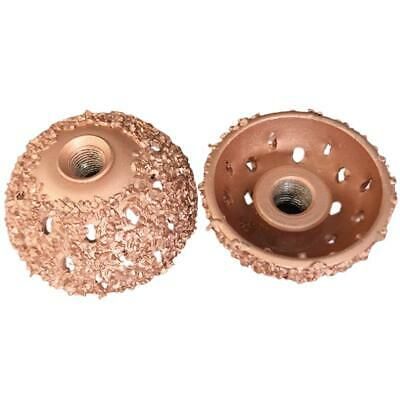 They are used with various non-liquid polishing pastes. They are used for a wide range of tasks. The best result is achieved at a recommended speed of 5-10 m/s. In this case, an ideal compromise is achieved between the produced surface quality, processing speed and tool wear. When changing polishing pastes, it is also necessary to change the polishing wheel. Advantages: High-quality felts Consistent high quality of wheels Long service life0055
They are used with various non-liquid polishing pastes. They are used for a wide range of tasks. The best result is achieved at a recommended speed of 5-10 m/s. In this case, an ideal compromise is achieved between the produced surface quality, processing speed and tool wear. When changing polishing pastes, it is also necessary to change the polishing wheel. Advantages: High-quality felts Consistent high quality of wheels Long service life0055
Roxelpro radial end felt polishing pad 150 x 50 x 25mm, soft. 100% sheep wool polishing pad. The wheel is designed to work on stationary machines or polishers through special adapters. This is an effective solution for processing large areas of the surface of stainless steel and other metals. The best result is achieved at a recommended speed of 5-10 m / s. In this case, an ideal compromise is reached between the produced surface quality, processing speed and tool wear. When changing polishing pastes, the polishing wheel must also be changed. Advantages: High quality felt Long service life 100% sheep wool..
Advantages: High quality felt Long service life 100% sheep wool..
Radial end pad 150 x 6 x 13mm, soft. 100% lambswool pad. The wheel is designed to work on stationary machines or polishers through special adapters. This is an effective solution for processing large areas of the surface of stainless steel and other metals. The best result is achieved at a recommended speed of 5-10 m / s. In this case, an ideal compromise is reached between the produced surface quality, processing speed and tool wear. When changing polishing pastes, the polishing wheel must also be changed. Advantages: High quality felt Long service life 100% sheep wool..
Radial end pad 150 x 6 x 25mm, soft. 100% lambswool pad. The wheel is designed to work on stationary machines or polishers through special adapters. This is an effective solution for processing large areas of the surface of stainless steel and other metals. The best result is achieved at a recommended speed of 5-10 m / s. In this case, an ideal compromise is reached between the produced surface quality, processing speed and tool wear. When changing polishing pastes, the polishing wheel must also be changed. Advantages: High quality felt Long service life 100% sheep wool..
When changing polishing pastes, the polishing wheel must also be changed. Advantages: High quality felt Long service life 100% sheep wool..
Radial edge felt pad 150 x 20 x 25mm, soft. 100% lambswool pad. The wheel is designed to work on stationary machines or polishers through special adapters. This is an effective solution for processing large areas of the surface of stainless steel and other metals. The best result is achieved at a recommended speed of 5-10 m / s. In this case, an ideal compromise is reached between the produced surface quality, processing speed and tool wear. When changing polishing pastes, the polishing wheel must also be changed. Advantages: High quality felt Long service life 100% sheep wool..
A medium-hard all-purpose polishing pad ideal for applying polishes and protective products.
PREMIUM PAD medium hard universal polishing pad orange. The fine-mesh structure of closed-cell foam rubber is ideal for applying polishes and protective products.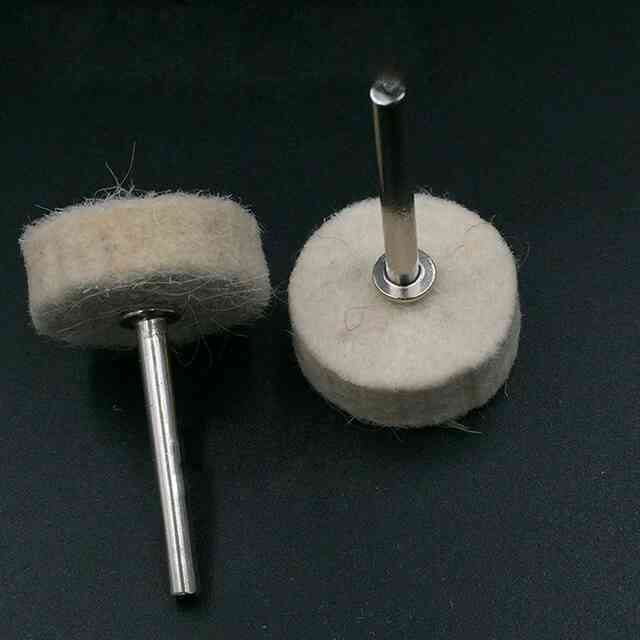
Polishing tips vary in size, material, shape and, most importantly, functionality and abrasiveness. The effectiveness of fur polishing wheels is very often misunderstood: these wheels have maximum abrasiveness, i.e. provide maximum grinding effect. The classification of polishing wheels is shown in the figure below:
ABRASIVE:
1. ULTRA HARD
Premium SOFTouch Topwool - Soft circle made of premium wool.
High quality 100% virgin wool pad with foam core for maximum performance on fresh and old paintwork.
2. RIGID
Sandwich Spider Pad - Layered mesh pad (black and white).
Innovative surface calibrated wheel with two layer structure, maximum abrasion with minimum temperature rise on fresh paintwork.
3. HARD
Spider Pad navy-blau - Dark blue mesh circle.
Premium hard polishing pad with open pores. Innovative, high temperature resistant foam formula delivers consistent results.
4. MEDIUM HARD
POLISHING PAD PURPLE
High quality, coarse pore, hard polishing pad for paintwork. Durable premium reticulated foam for maximum durability.
5. SOFT
POLISHING PAD ORANGE - Orange polishing pad.
Universelle Polierscheibe mittlerer Härte. Die feine und geschlossene Zellstruktur des Schaumes eignet sich bestens für Endfinish- und Versiegelungs-Applikationen.
6. SOFT
SpiderPad Neo - Neo mesh circle (yellow).
Reticulated, fine-pored hybrid disc with calibrated surface for hologram removal and application of the innovative NEO polymer protector.
7. ULTRA SOFT
SOFTouch-WAFFLE PAD BLACK - Soft ribbed black circle.
Ultra soft polishing pad with additional foam backing (orange) to compensate for pressure.
If the wheel becomes dusty or sticky during polishing, it must be cleaned of dirt and used polishing agent. The easiest way is to use a cleaning brush: press the brush against a wheel rotating at low speed and clean it in this way. After polishing, all wheels should be washed with water and detergent. Wet fur polishing pads must then be reattached to the disc with Velcro, otherwise they will lose their shape.
The reasons may be different:
a) The polishing machine was turned on before it was placed on the varnish surface (common mistake by beginners).
b) Rotation speed too high.
c) Too much material.
d) Misalignment when polishing / dust when polishing edges.
e) New, not yet developed polishing wheel.
e) A fresh wheel that has been unevenly smeared with paste prior to polishing.
1. Apply abrasive paste evenly over the entire area of the new wheel. Any part of the wheel that is not coated with a polish can lead to micro-scratches.
2.| Next, the abrasive paste applied to the wheel must be evenly distributed over the surface, and then rubbed NOT INCLUDING THE MACHINE. The purpose of this procedure is to distribute the paste over the entire surface of the wheel - to ensure uniform removal of the coating.
3.| Then install the machine with the circle on the paintwork, set the desired number of revolutions with the rotation speed controller.
4.| After that, you can turn on the machine and start polishing.
5.| The surface should be processed "crosswise". The size of the treated area must be chosen so as to process it from one position.
Videos from our customers